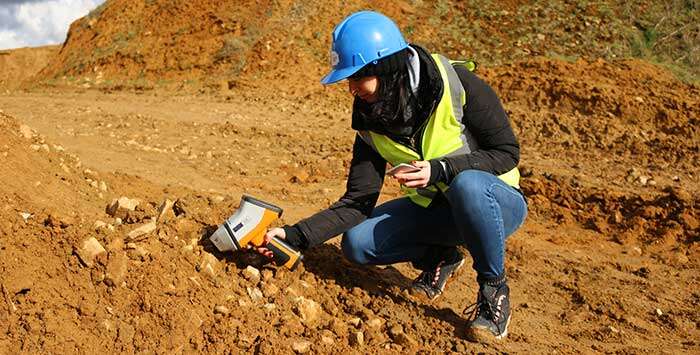With the construction industry booming globally, especially in countries like China, Philippines and the UK, organisations need to look at how they are going to manage on-site contaminants screening for building sites.

Heavy elements have been used for years in many industrial, agricultural, and domestic applications. This has sometimes resulted in their accumulation in specific geographical areas, such as old industrial or mining sites.
Because of their detrimental impact on human health, many departments for public health and environment around the world have put in place soil screening and remediation programs to minimise and prevent exposure. In the United States for example, its Environmental Protection Agency (EPA) has put in place Soil Screening Guidance (SCG) to provide a framework for site evaluation and screening level development.
Using a handheld XRF analyser for soil screening helps site managers to considerably reduce analyses costs, by reducing the number of samples sent to an off-site laboratory: you can quickly identify the areas that require clean-up. By being able to determine the elemental composition of soil samples, both qualitative and semi-quantitative data can assist with decisions on further sampling strategy for the full assessment of soil quality. It also helps with monitoring remediation efforts.
Christelle Petiot, Product Manager, shares the benefits, limitations and her tips on how to get good results with a handheld XRF analyser for soil analysis:
The more effort you put into the pre-treatment of soil samples, the better the results:
Remove debris, rocks, and flatten the area to test with a non-metallic object to smooth out the surface.
Dry out the samples as much as you can. You can use absorbent paper, and/or leave the sample to air-dry in a well ventilated area if needed as moisture above 10% will have a detrimental effect on the results accuracy. Results are typically 70% – 80% of the laboratory reported values when they contain 15 to 25% water.
Sieve and/or grind to obtain a fine particle size, and then place the powder in a thin sample bag or cup.
Measure a blank (e.g. SiO2 in a cup) at regular interval to check for contamination; change analysis window when needed.
Measure a known soil check sample at regular intervals to verify accuracy and stability.
Find out more